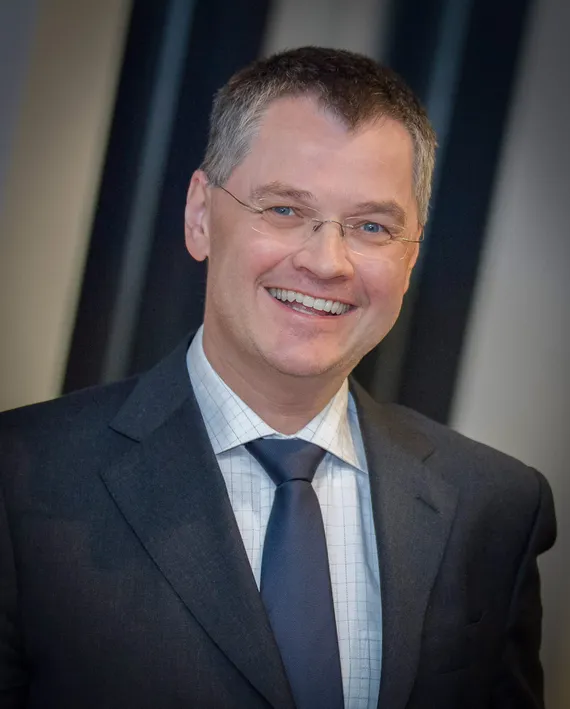
Uher: “Investment brake not locked”
- Companies: 8 out of 10 want to maintain or increase the level of investment
- As of today: Innovation billion topped up by EUR 750 m.
- Investment weakness, but Austria not standing still
Gross fixed capital formation in Austria has steadily increased since 1995: from approx. EUR 45 bn. to an expected EUR 78 bn. in 2016[1]. “This clearly shows that the investment brake isn't locked in Austria”, says Thomas Uher, chairman of the management board. However, the investment ratio – i.e., the ratio between investment and gross domestic product – is in a declining trend. While it still amounted to 27% in 1995, it currently stands at around 22%[2]. This isn't a particularly worrisome trend, since such a reduction can be observed in many industrialized nations. Partially this is due to the fact that necessary investment in infrastructure over time tends to decline in countries that are economically well-developed. Another reason could however also be a decline in a country's attractiveness as a business location. An international comparison shows that Austria is actually well placed with an investment ratio of 22.2% - it is ahead of both Germany (20%) and the euro area (19.5%).
Innovation billion topped up by EUR 750 m.
As measured by total gross capital formation, Austria is not standing still, but does exhibit significant weakness in terms of investment. The willingness of companies to invest is currently noticeably below the long term trend. “The main reason for this is that entrepreneurs lack confidence in the future”, Uher says. Uncertainty with respect to the global economy, as well as political uncertainty may be motives for the reluctance to invest. The much overused comparison to our German neighbours shows that Austria is likely to lag behind significantly in terms of investment growth in coming years as well. In 2015, real investment is expected to grow by 1% in this country (GER: 1.8%) and by 1.5% in 2016 (GER: 2.2%). In order to outdistance Germany in terms of investment growth, additional investment in the amount of approx. EUR 750 m. would be required in each year. “We are making this funding available with immediate effect, by topping up our innovation billion by precisely this amount as of today”, Thomas Uher explains. With that the money required for these investments will be available. Entrepreneurs can with immediate effect submit their investment projects at

One third expect the economy to worsen this year
According to a recent IMAS survey on behalf of Erste Bank und Sparkassen, more than one third of Austria's entrepreneurs expect a worsening economic trend this year compared to the previous year, nearly half see no change compared to the previous year, and only every fifth is optimistic and sees improving prospects for this year. In 2011 Austrian entrepreneurs were still far more confident: at the time, 60% still believed that things would improve relative to 2010.
In spite of these subdued expectations, every fifth wants to invest more this year than in the previous year, around two thirds want to at least maintain the level of investment, while only 18% want to invest less this year. “This isn't a bad starting point. What is needed now are further measures - including economic policy measures – in order to create fresh incentives for investment”, Uher says. One such incentive could be an accelerated depreciation allowance. This tax incentive could lead to an increase in capital spending, resp. could result in investment being brought forward, and thereby contribute to a revival of economic activity.
Credit demand could indeed come to life again in 2015 and 2016 as well. Nominal gross fixed capital formation is already on the rise again, and historically an increase in credit demand tends to take hold concurrently. At Erste Bank und Sparkassen the lending floodgates are standing open for this.
[1] Gross fixed capital formation according to Statistics Austria
[2] Gross fixed capital formation as a percentage of GDP, Statistics Austria

